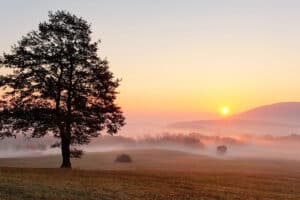Although the appeal of acquiring a large tract of rural land is timeless, the mechanics involved with making a sound investment in this class of real estate are constantly evolving. Traditionally, the purchase of land in a rural location is viewed as a long-term investment with a high probability of appreciation that is a good hedge against inflation.
The recent global recession served as a reminder that economic conditions have major impacts on real estate (including land in agricultural production) and traditional investment strategies often need adjustment. For example, nearly six years after the recession, Southeast timberland values remain at long-term lows while farmland values in some Midwest states have quadrupled in value during this time frame.
This comparison reinforces the idea that the days of simply following Will Rogers’ advice of “Don’t wait to buy land, buy land and wait” are over. Current land investors need to comprehend the driving forces behind past, current and future land markets.
Proper due diligence for rural land begins with a focus on fundamental, value-adding characteristics. Property features that create the foundation of value for a land asset include water, soil, minerals, roads, encumbrances, access, neighbors and location.
The identification of any lapses in integrity relating to each feature can play an important role in not only valuing a property, but also in determining its suitability for purchase. Therefore, land investors should be prepared to devote resources to ensure that the quality of the property’s framework is legitimate.
The next step should evaluate the use(s) of the land and how the use(s) will relate to property values. For instance, consider the above-mentioned difference in the Southeast timberland values and the Midwest farmland values. The status of the housing market and corn prices over the last few years resulted in low demand for merchantable timber and high demand for tillable acreage. These implications were certainly driving forces behind current land values in these regions, and it is important as a land investor to recognize that future demands will shift.
One example of shifting demands is the current price of milk, which is approaching all-time highs. This trend will very likely have an impact on land values in certain regions of the country well known for dairy farms. On the local level, South Carolina landowners are anticipating several hundred million dollars in loss and damage from this year’s winter ice storms, which should affect timberland prices to some degree.
The ups and downs of the agricultural commodity and timber markets are incredibly volatile, so it’s essential to become educated on available income opportunities in order to protect a land investment. Landowners can generate income through cattle leases, cropland leases, hunting leases, timber sales, easement sales and USDA grants. Selling pine straw and leasing land for cellphone towers are gaining traction in some markets, and operating commercial hunting outfits can become high-end business ventures. Establishing income-producing outlets on a property is paramount to a land investor who may need to wait out a market downturn, and in some instances, these uses add value to a property.
Re-investing some of this income into a land asset is an excellent tool for maximizing ROI and therefore should be done early and often. Again, a landowner needs to focus on the highest and best use of a property. Cost-effective improvements have the ability to add uses and increase land values and, if the timing is right, can lead to homerun investments. Picture a scenario of a Midwestern landowner that purchased timberland, converted the timber into pasture before the current bubble, and then sold the property after farmland values shot up. Implementing a wildlife habitat is another cost-effective improvement that a land investor should consider, as properties that offer high-end hunting and fishing pursuits typically trade at high-end prices. Waterfowl impoundments, for example, can triple the value of the land.
The current local market continues to be heavily influenced by the effects of the economic downturn as average land values remain very low compared to pre-recession prices. However, 2013 did show legitimate growth in land sales and has carried over into 2014.
Many transactions during this time period are beginning to pull average land values up. Low entry-level prices for land investments are still available, and buyer activity has steadily increased over the last 18 months and continues on an upward trend. These conditions support Will Rogers’ advice of “not waiting to buy land.” However, simply waiting for a land investment to appreciate in value is an outdated, one-dimensional strategy.
Today’s land investor should take a proactive approach to understanding the fundamentals of value, agricultural and timber markets, income opportunities and cost-effective improvements in order to position themselves for a maximum return.
This content may not be used or reproduced in any manner whatsoever, in part or in whole, without written permission of LANDTHINK. Use of this content without permission is a violation of federal copyright law. The articles, posts, comments, opinions and information provided by LANDTHINK are for informational and research purposes only and DOES NOT substitute or coincide with the advice of an attorney, accountant, real estate broker or any other licensed real estate professional. LANDTHINK strongly advises visitors and readers to seek their own professional guidance and advice related to buying, investing in or selling real estate.










What are necessary steps to take in order to plant a cellphone tower on one’s property?
Excellent article, Rusty. Like the focus on alternative revenue opportunities and a heads up, proactive approach to land investing to capitalize on opportunities and max out ROI. Thinking creatively to keep stacking those basis points is key.
-Daniel Hautamaki
Ag & Timber Adviser
NAI TALCOR
Tallahassee, FL